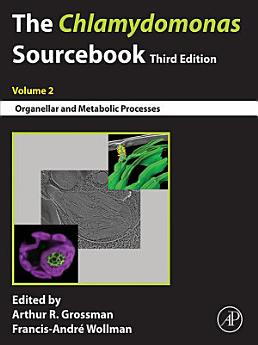The Chlamydomonas Sourcebook: Volume 2: Organellar and Metabolic Processes, Edition 3
About this ebook
About the author
Arthur R. Grossman has been a staff scientist at the Carnegie Institution for Science since 1982 and is a courtesy professor at Stanford University. He received both the Gilbert Morgan Smith Medal (2009) from the National Academy of Sciences and the Darbaker Prize (2002) from the Botanical Society of America for his work on microalga. In an NSF-supported project and collaborations with the Joint Genome Institute of the Department of Energy (DOE), he spearheaded the initial Chlamydomonas genome project that led to the complete Chlamydomonas genome sequence, its initial annotation, and the use of the information to promote genome-wide transcriptome analyses; Chlamydomonas remains a powerful molecular-genomic model system and a flagship alga of the DOE. Grossman’s focus is on how photosynthetic organisms perceive and respond to their environment, with an emphasis on light and nutrient conditions.
Francis-André Wollman is an emeritus research director at the Centre National de la Recherche Scientifique (CNRS), a member of the French Academy of Sciences, a member of EMBO, and has received the Silver Medal from the CNRS. In the mid-1970s, he joined the photosynthesis laboratory of Pierre Joliot at the Institut de Biologie Physico-Chimique (IBPC) in Paris and in the late 1990s, he became the director of this laboratory before being appointed director of IBPC in 2007. His research has focused on the biogenesis, regulation, and evolution of oxygenic photosynthesis. Throughout his career, he has used the genetics of Chlamydomonas reinhardtii for biophysical, biochemical, and structural studies to provide a dynamic view of photosynthesis as being highly responsive to an ever-changing environment through its bioenergetic integration and metabolic flexibility.




